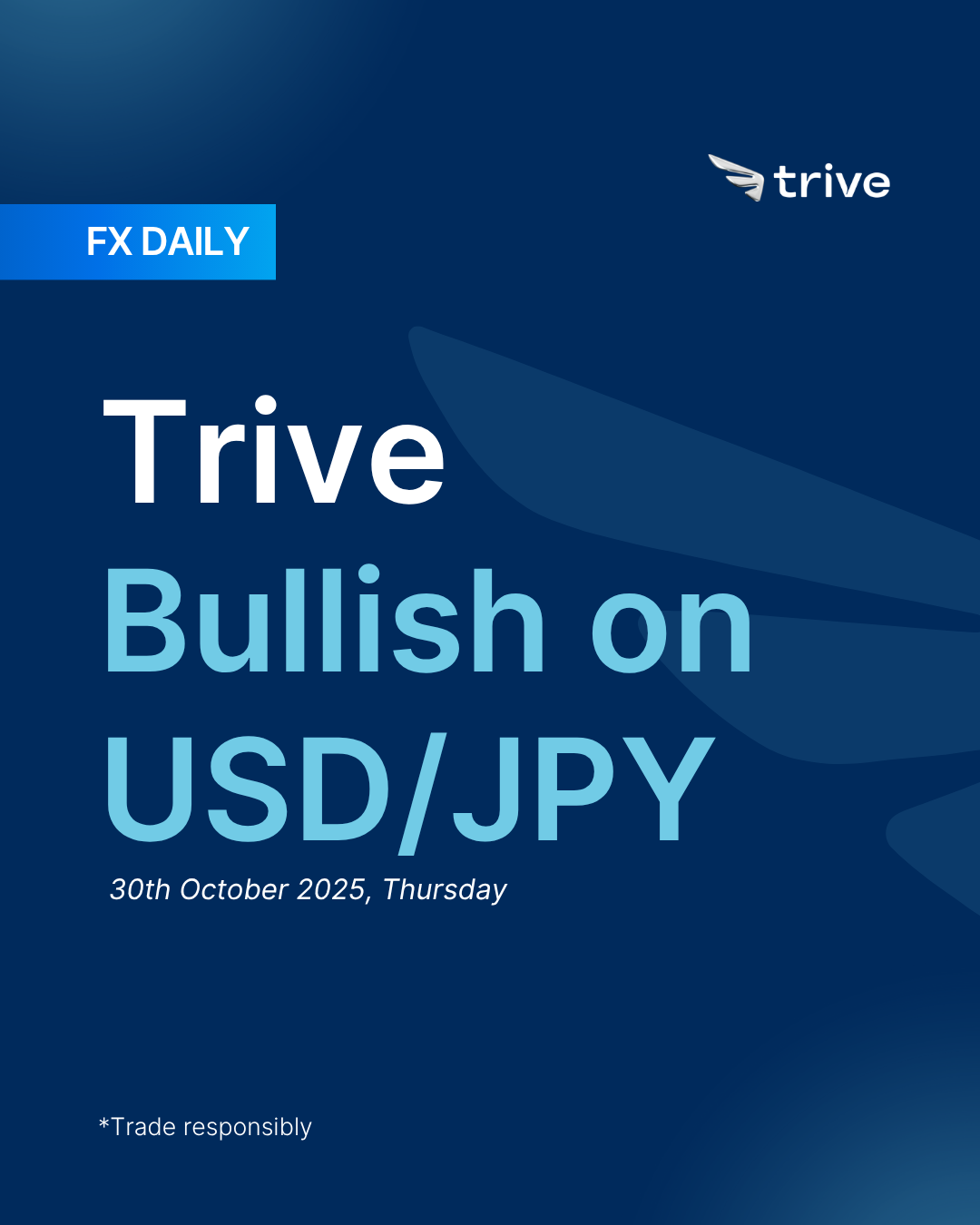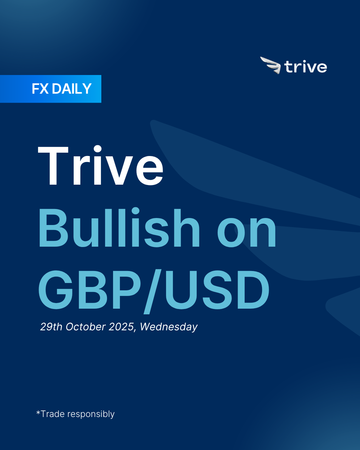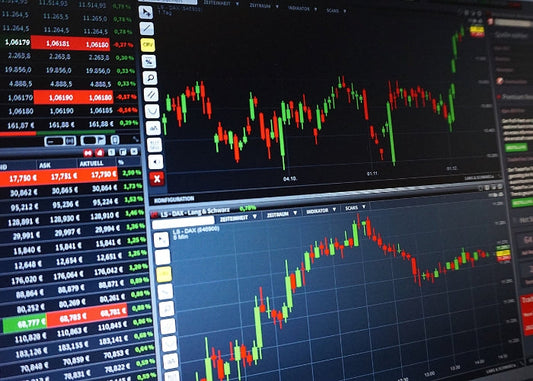FX Daily: Trive Bullish on USD/JPY

The Yen weakened sharply as Sanae Takaichi’s appointment as Prime Minister fueled expectations of large fiscal stimulus and policy continuity at the BoJ. This “Takaichi trade” combined with rising global yields pushed USD/JPY above 153.00, confirming renewed downside pressure on the Yen. With the BoJ maintaining its patient stance and US yields staying firm, the rate gap continues to favor the Dollar. Market sentiment remains risk-on, further limiting demand for safe havens.
JPY: Weak bearish
The Japanese Yen was the weakest G10 currency of the week, falling sharply as domestic politics dominated market attention. The confirmation of Sanae Takaichi as Japan’s new Prime Minister reignited the so-called “Takaichi trade,” centered on expectations of large fiscal stimulus and a more relaxed stance toward the Bank of Japan. Combined with a positive global risk tone and higher global bond yields, these factors created strong downward pressure on the Yen. USD/JPY climbed steadily through the week, breaking above 151.00 and 152.00 before testing 153.00 by Friday’s close, marking a new weekly high and confirming the Yen’s underperformance.
The dominant theme was the change in government. The ruling Liberal Democratic Party formed a coalition with the Japan Innovation Party, securing parliamentary approval for Takaichi on Tuesday. Her leadership immediately boosted expectations for aggressive fiscal measures. She instructed her cabinet to prepare a stimulus package and emphasized that her focus would be “Economy first, then fiscal policy,” which reinforced JPY-negative sentiment. The newly appointed Finance Minister, Satsuki Katayama, maintained conventional language about the importance of stable currency moves, offering no signs of interventionist or hawkish policy shifts.
At the central bank level, the BoJ maintained its patient approach. Board member Takata’s mildly hawkish remarks early in the week were balanced by reports that the bank is “closer” to a hike but sees “no urgency to act,” keeping expectations steady for no policy change at the upcoming October 30 meeting. Prime Minister Takaichi also stated that she saw no need to revise the BoJ–government accord, signaling respect for the bank’s independence and reducing fears of political interference in monetary policy. Market pricing reflected this patience, assigning roughly a 20% chance of a rate hike in October and about 50% by year-end.
In economic data, Japan’s largest labor union, RENGO, announced plans to push for wage increases of 5% or more in the 2026 spring negotiations, a development that supports the BoJ’s long-term inflation and wage growth goals but has no short-term impact on policy. Friday’s national CPI came in largely in line with forecasts, with the core-core measure slightly cooler, confirming that inflation remains moderate and allowing the BoJ to stay patient.
Externally, rising US Treasury yields widened the interest rate gap between the US and Japan even further, strengthening the dollar’s appeal in carry trades and compounding downward pressure on the Yen.
The Japanese Yen tumbled this week, posting its weakest performance among the G10 currencies. The appointment of Prime Minister Sanae Takaichi triggered expectations of aggressive fiscal stimulus and continued policy patience at the BoJ, deepening yield differentials just as global bond yields moved higher. Combined with a steady risk-on tone and firmer US data, this produced broad selling in the Yen and lifted USD/JPY through the 153 level into the weekend.
Near term, weak bearish. The political shift and renewed widening in global yield spreads have reasserted downward pressure on the Yen. The “Takaichi trade”, a mix of fiscal expansion and tolerance for loose monetary conditions has reinforced the market view that Japan will remain a low yield environment well into next year. Meanwhile, the BoJ has offered no signs of near-term tightening, and global risk sentiment is positive, further limiting safe haven demand. That combination leaves the Yen vulnerable in the short run, keeping the bias weakly bearish. This stance would soften toward neutral if the BoJ delivers a mildly hawkish tone at this week’s meeting or if global yields stabilize, but for now, policy and sentiment continue to work against the currency.
Longer term, weak bullish. The structural story remains unchanged. Japan’s large current-account surplus, the potential for higher wage settlements, and the eventual narrowing of yield gaps once the Fed begins cutting still argue for gradual Yen appreciation over time. The BoJ’s path toward normalization may be slow, but it has not been abandoned, and the currency’s safe-haven and funding characteristics keep a medium-run floor under valuation. However, near-term fiscal stimulus and delayed tightening mean that the timing of this shift has moved further out.
If the BoJ signals patience again and US yields rise further, the near term bearish tone could extend. On the other hand, any evidence that the BoJ is preparing to normalize policy sooner or that US yields are peaking would likely mark the start of a more durable recovery in the Yen.
USD: Short at rally
The US Dollar traded in a choppy and mostly directionless range, with the DXY ending the week little changed despite rising geopolitical tensions and a key US inflation report. The week began quietly as the Dollar consolidated while markets digested President Trump’s softer stance on China. Mid-week, sentiment improved as the unwinding of the “currency debasement” trade led to a sharp decline in gold prices, and solid earnings from Zions Bancorp eased concerns about US regional banks.
On Thursday, the narrative shifted as the US imposed sanctions on major Russian oil companies, triggering a rally in crude oil and dominating the geopolitical landscape. The week ended with the September CPI report, which came in cooler than expected. This initially pressured the Dollar, pushing the DXY to a low near 98.72, but the move was offset by strong Flash PMI data. The surprise termination of trade talks with Canada added volatility, leaving the Dollar caught between dovish inflation data, solid growth signals, and a tense geopolitical environment.
The main driver of the week was the September CPI, which rose 0.3% month-on-month versus expectations of 0.4%, while Core CPI increased 0.2% against 0.3% expected. The yearly Core CPI also undershot at 3.0% compared to 3.1% forecasted, showing that inflation pressures remain contained and supporting the Fed’s easing outlook. In contrast, Flash PMIs were strong, with the Composite PMI at 54.8 and both Manufacturing and Services beating expectations, pointing to solid Q4 growth. Other data were limited due to the ongoing government shutdown, though existing home sales rose 1.5%.
The Fed remained in its blackout period, providing no new commentary, and market pricing for a 25bps cut at the October 30 meeting stayed unchanged.
On the geopolitical side, the US sanctioned Russian energy firms Rosneft and Lukoil, which sent oil prices higher and led to reports that China and India paused seaborne Russian oil imports. Meanwhile, US-China relations stayed mixed, with Washington considering new export controls in response to China’s rare earth policies, though high-level talks in Malaysia and a Trump–Xi meeting were confirmed for the following week. Late in the week, President Trump abruptly ended trade talks with Canada after criticizing a Canadian advertisement, souring North American trade relations. The unresolved US government shutdown continued to add policy uncertainty.
Market sentiment was mixed. Optimism returned early in the week as Zions Bancorp’s results suggested that credit stress was contained. The record plunge in gold prices supported the Dollar mid-week, reflecting a strong reversal of the “weak-dollar” narrative. By Friday, traders were torn between dovish signals from CPI and the growth resilience implied by strong PMI data, leaving the Dollar’s direction uncertain.
The US Dollar advanced this week, ending higher as strong US data, firmer oil prices, and persistent geopolitical tension outweighed a softer CPI print. Early weakness after the inflation report was quickly reversed as markets pared back aggressive Fed easing bets and risk appetite improved on US–China trade optimism. By Friday, the DXY had gained ground, supported by higher real yields and safe-haven demand tied to new sanctions headlines.
Near term, neutral with a bearish skew. The Dollar’s tone has turned more balanced. While September CPI confirmed that inflation pressures are cooling, the upside surprise in PMIs and steady consumption data showed that the US economy remains resilient. That combination reduced the urgency for rate cuts and allowed front end yields to edge higher, lending the Dollar support. Global sentiment has also stabilized, with optimism around renewed US–China talks limiting defensive demand for the yen and franc but lifting the greenback. The Fed is expected to lower the rates this week, and Powell’s tone will determine whether the next leg is higher or lower. A cautious message acknowledging softer inflation but firm growth would keep the Dollar rangebound. Only a distinctly dovish signal, such as explicit guidance toward more cuts would weaken it meaningfully, while a hawkish surprise could quickly lift the bias to bullish. However, if the trade war unexpectedly escalates again, worsening global growth prospects, the Dollar’s outlook would likely deteriorate as confidence and capital flows shift away from US assets.
Longer term, weak bearish. The structural outlook still favors gradual Dollar underperformance as US exceptionalism fades. The Fed remains closer to an easing cycle than its peers, and the accumulation of trade, fiscal, and credit risks continues to weigh on long-term confidence in US assets. Narrowing rate differentials, slower growth momentum, and uncertainty surrounding tariff policy and government funding suggest less room for the Dollar to sustain its strength. However, the path lower is likely to be uneven, given solid near-term growth and the currency’s reserve status.

Disclaimer
This material is provided for informational purposes only and does not constitute financial, investment, or other advice. The opinions expressed in this material are those of the author and do not necessarily reflect the views of Trive International. No opinion contained in this material constitutes a recommendation by Trive International or its author regarding any particular investment, transaction, or investment strategy. This material should not be relied upon in making any investment decision.
The information provided does not consider the individual investment objectives, financial situation, or needs of any specific investor. Investors should seek independent financial advice tailored to their individual circumstances before making any investment decisions. Trive International shall not be liable for any loss, damage, or injury arising directly or indirectly from the use of this information or from any action or decision taken as a result of using this material.
Trive International may or may not have a financial interest in the companies or securities mentioned. The value of investments may fluctuate, and investors may not get back the amount they originally invested. Past performance is not indicative of future results.
For more information about Trive International, please visit http://trive.com/int
Additional Information
Investing involves risk, including the potential loss of principal. Diversification and asset allocation strategies do not ensure a profit or guarantee against loss. The content in this material is subject to change without notice and may become outdated or inaccurate over time. Trive International does not undertake any obligation to update the information in this material.
By accessing this material, you acknowledge and agree to the terms of this disclaimer. If you do not agree with these terms, please refrain from using this information.
No comments
Home
Trive
TriveHub




0 comments